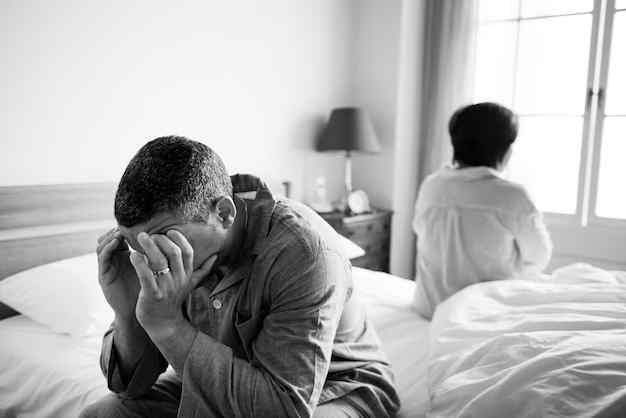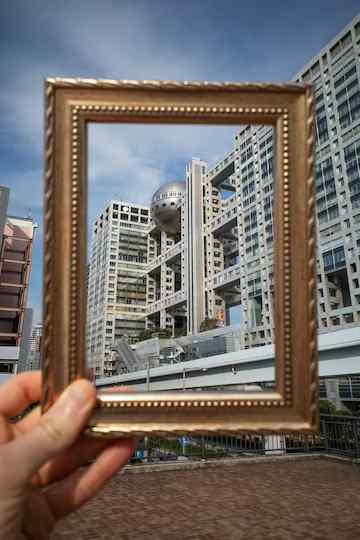Table of Contents
Quality Service Guarantee Or Painting Free

Get a rental agreement with doorstep delivery

Find the BEST deals and get unbelievable DISCOUNTS directly from builders!

5-Star rated painters, premium paints and services at the BEST PRICES!
Loved what you read? Share it with others!

The Connection Between Home Design and Insomnia – Tips for Real Estate Homeowners
Table of Contents
The design of your home can significantly impact your sleep quality. Insomnia can be frustrating and lead to health issues, and as a homeowner, you have the power to create a sleep-friendly environment. In this blog post, we will explore the connection between home design and insomnia and provide tips for homeowners to create homes that promote quality sleep.
Lighting

The lighting in your home can have a significant impact on your sleep quality. Exposure to natural light during the day can help regulate your sleep-wake cycle, while exposure to artificial light at night can disrupt it. As a homeowner, consider incorporating as much natural light as possible into your home. This can be done by adding large windows, skylights, or solar tubes to let in more daylight. Additionally, be mindful of harsh artificial lighting, and use dimmer switches to create a relaxing atmosphere in the evening. For bedrooms, consider the use of blackout curtains to block out unwanted light.
Bedroom Layout

The layout of your bedroom is another critical factor in promoting quality sleep. Ideally, the bedroom should be located in a quiet area of the home, away from any noise or disturbances. If possible, avoid positioning the bedroom near high-traffic areas, such as the kitchen or living room. When designing the bedroom layout, consider positioning the bed away from windows and doors to reduce noise and drafts. Additionally, consider incorporating built-in storage solutions to keep clutter at bay and create a relaxing environment.
Quality Service Guarantee Or Painting Free

Get a rental agreement with doorstep delivery

Find the BEST deals and get unbelievable DISCOUNTS directly from builders!

5-Star rated painters, premium paints and services at the BEST PRICES!
Noise Reduction

Noise is a common disruptor of quality sleep, and as a homeowner, it's important to consider noise reduction in your home. Use soundproofing materials in walls and ceilings to reduce noise transfer between rooms. Additionally, use noise-reducing materials in high-traffic areas, such as carpeting or acoustic panels. If your home is located in a noisy area, consider installing triple-pane windows to reduce outside noise.
[widget_owner_form]Temperature Control

The temperature in your home can have a significant impact on sleep quality. The ideal temperature for sleeping is between 60- and 67-degrees Fahrenheit. Use programmable thermostats to control the temperature in your home, and consider installing ceiling fans to circulate cool air. Additionally, consider incorporating insulation to regulate the temperature and reduce noise transfer.
Air Quality

The air quality in your home can also impact sleep quality. Poor air quality can lead to respiratory problems, interfering with sleep. As a homeowner, consider using air purifiers to improve indoor air quality. Additionally, avoid using volatile organic compounds (VOCs) in building materials, which can cause respiratory problems.
In conclusion, the design of your home can significantly impact your sleep quality. By incorporating sleep-friendly features such as natural lighting, a well-designed bedroom layout, noise reduction, temperature control, and clean air, you can create a comfortable and relaxing environment that promotes quality sleep. Use the tips outlined in this blog post to create a home that contributes to your overall health and well-being.
FAQ's
A: Home design can significantly affect your sleep quality and cause insomnia in several ways. For instance, exposure to excessive light or noise can disrupt your sleep cycle and affect your ability to fall asleep or stay asleep.Also, uncomfortable furniture, such as a mattress that does not offer adequate support or pillows that do not align with your neck and spine, can cause physical discomfort and lead to sleep disturbances. Poor ventilation or air quality can also lead to respiratory issues and affect your sleep quality. Therefore, designing your home with features that promote comfort, relaxation, and conducive sleeping environments is essential to preventing insomnia.
A: To design your home to promote better sleep, consider the following tips:
Choose a comfortable mattress and pillows that offer adequate support and align with your body's natural curves.
Use window coverings that block out excess light and noise, such as blackout curtains.
Ensure proper ventilation and air quality by installing an air purifier or maintaining proper humidity levels.
Incorporate calming colours and textures, such as earth tones and soft fabrics, to create a soothing ambience.
Reduce clutter and keep your bedroom free of distractions, such as electronic devices or work-related items, to create a peaceful environment.
A: Lighting can significantly affect your sleep cycle by regulating your circadian rhythm, the internal process that controls your sleep-wake cycle. Excessive exposure to artificial light, the particularly blue light emitted by electronic devices, can suppress the production of melatonin, a hormone that regulates sleep. Therefore, it is crucial to limit your exposure to blue light before bedtime and use warm, dim lighting in your home. Some recommended lighting options include warm-toned bulbs or lamps with adjustable dimming features that can mimic the natural transition from daylight to evening darkness.
A: Bedroom temperature can significantly affect your sleep quality, as extreme temperatures can cause discomfort and disrupt your sleep cycle. The ideal temperature for sleeping is between 60-67 degrees Fahrenheit, depending on personal preferences.
Therefore, it is essential to regulate your bedroom temperature to promote optimal sleeping conditions. Some recommended methods to regulate bedroom temperature include using a programmable thermostat, using ceiling fans or portable fans, and ensuring proper insulation and ventilation in your home. Additionally, using appropriate bedding materials, such as breathable fabrics, can also help regulate body temperature and prevent overheating during sleep.
A: Yes, interior design elements such as wall colour, room layout, and furniture arrangement can significantly affect your sleep quality. For instance, using calming colours such as blues and greens can promote relaxation and reduce stress levels, while bright colours such as reds and oranges can stimulate the brain and hinder sleep.
Additionally, a cluttered or poorly arranged bedroom can create a stressful environment that affects your ability to relax and fall asleep. Therefore, it is essential to choose colours and layouts that promote a calming and relaxing environment conducive to quality sleep.
Loved what you read? Share it with others!
Most Viewed Articles

Secrets to Unlock Before Buying Your Dream Apartment
June 15, 2023
6509+ views

Unlocking the World of Digital Assets: A Guide to Cryptocurrency and NFTs
March 21, 2023
6264+ views

Unleashing The Power Of Chakras Through Yoga And Meditation
April 25, 2023
6042+ views

Unlocking IPO Potential: Strategies for Maximising Returns
June 13, 2023
6022+ views

Understanding the Tenant Selection Process
June 16, 2023
6005+ views
Recent blogs in
The Impact of Yearly Budget 2025-24 on Middle Class [A Comprehensive Analysis]
January 31, 2025 by NoBroker.com
Understanding the Tenant Selection Process
June 16, 2023 by NoBroker.com









 Full RM + FRM support
Full RM + FRM support
Join the conversation!